- Home
- J. R. R. Tolkien
The Nature of Middle-earth Page 7
The Nature of Middle-earth Read online
Page 7
Some calculations
It will be seen that the dates given in the “Lord of the Rings” fit well with these rates, save in two points.
The rate of the Half-elven that chose to join the Quendi was evidently in Middle-earth 100 : 1. (For those who joined Men a special rate of growth was established, approximately 3 : 1, though this diminished, but was in Aragorn almost restored: he was 5 : 2).[3]
Elrond. He was born 58 [sun-]years before the end of the First Age in the overthrow of Morgoth;[4] but he was born in Middle-earth and so inherited from the beginning the rate 100 : 1. He lived then through the Second Age of Middle-earth: 3,441 years. He wedded Celebrían in TA 100 (it is said),[5] and left Middle-earth at the end of the Third Age (3021). He said that in the Last Alliance (SA 3430) he was “the herald of Gil-galad”.[6]
We see therefore that when he left Middle-earth he was 58 + 3,441 + 3,021 years old = 6,520. He was then in human terms just over 65 and still in full vigour.[7]
At the Last Alliance he was 58 + 3,430 = 3,488 ÷ 100 = nearly 35. At his wedding he was 58 + 3,441 + 100 = 3,599 ÷ 100 = 36.
Celebrían was born (it seems) early in the Second Age, when Galadriel refused to return to Eressëa, and passed over the Mountains. Probably SA 300. At her wedding with Elrond therefore she would be 3,441 – 300 + 100 = 3,241 years old, or 32. A reasonable age, and further to be explained by the fact that her marriage was postponed by the War of the Last Alliance, and the preceding troubles in Eriador. At her departure from Middle-earth in TA 2509 she was 3,141 + 2,509 = 5,650 years old, or 56.[8]
Arwen. She was born (according to LR) in TA 241. She was married to Aragorn in TA 3019. She was then 2,778 years old, or in human terms nearly 28. This in elvish terms is a very suitable age. Her wedding was in any case inevitably postponed by the War of the Ring and the preceding troubles. Also, in 2951, when Aragorn first met her, she was 2,710, or 27, whereas he was then 20: he had yet to overtake her, which in this case was desirable, since she was to become mortal in his degree. In 2980 when they plighted their troth in Lórien she was very little older, but he was 49.[9]
Now Aragorn was born in TA 2931, but lived until 4A 100, and was then of full age, but not yet becoming senile. His years were then 190.[10] He was the “last of the Númenóreans”, and his span was equal to the Kings of Men of old (as is said): thrice that of ordinary Men. Actually, his rate was probably rather 5 : 2 than 3 : 1: so that he was at his wedding in TA 3019 in years 88, in age 35; and at death in years 190, in age 75. (The full Númenórean rate would make him 29 at his wedding and 63 at death.)[11]
It would appear that the “grace” accorded to the Númenóreans was like that of Aman: it did not alter the human rate of growth to maturity, but postponed the decay of old age after that for a long while – until one knew inwardly (by a motion of the fëa) that the time had come to relinquish life in this world voluntarily.[12] If one did not do so, but clung to life, senility would soon arise. If Aragorn had yielded to Arwen’s entreaties, he would have become decrepit, at least in body, very soon.
Galadriel. She was born in Aman. At the exile she was young and eager, just at or upon the threshold of maturity: probably in age about 20. She must therefore have been in years about 20 × 144 = 2,880. She became acquainted with Celeborn (a Sindarin prince, and kinsman of Thingol) in Beleriand. But there were few marriages or child-births among the Eldar during the War with Angband, which though it occupied 590 years,[13] was to the Eldar in “ageing time” only a matter of some six year-equivalents. She probably married Celeborn soon after the overthrow of Morgoth, and when she (it appears, because of love for Celeborn, who would not leave Middle-earth yet) declined to return West to Eressëa,[fn1] they passed together over the “Mountains of Lune” into Eriador.[14] She was then about 26 in age, for the years in Beleriand had been at the ageing-rate of 100 : 1. In SA 300 or thereabout (3 [life-]years later) she bore Celebrían in Eriador. She was then about 29. She lived through all the remainder of the Second Age to SA 3441, and left Middle-earth in TA 3021. She was thus at that time in [life-]years 20 + (3441+3021)/100= 20 + 70.5, or 90 and a half years in age;[15] and thus in elven-terms, according to the time in which the “fading” of the Quendi was approaching, now passing the prime of her hröa.
As can be seen, these calculations show that the events and dates (of LR) are well-fitted to Elvish nature, and are evidently in the main correctly reported. But there are two points in which error appears: probably of scribal origin.
It is stated in the Tale of Years that Elrond married Celebrían in TA 100, and that his twin sons (Elladan and Elrohir) were born in TA 139, and Arwen in TA 241. This must be erroneous: for in TA 139 only 39 years, or in “ageing terms” of the Eldar and the Half-elven, 2/5 of a year had passed since Elrond’s wedding. This was impossible.[16]
Also, in TA 241 only 102 years had passed since the birth of the twins, which is not much more than a year of ageing time, and though not impossible is according to Elvish nature and behaviour, entirely improbable. (Especially after the birth of twins, and in the begetting and bearing of a special child of high excellence.)
It is thus probable that 100 and 241 are errors for 10 and 341: for these are in the circumstances easy errors to make; and it will be observed that if 10 and 341 are substituted the entries [i.e., in the published Tale of Years in App. B] are not displaced from their present position.
With these emendations we shall see that Celebrían and Elrond were at their wedding 90 years, or less than 1 [life-year], younger than as stated. This is of no great concern. But the birth of the twins was 129 years later or 1.29 [life-years], which is about a year and four months, which is in elven-terms very probable. The birth of Arwen was then 202 years later again, or about 2 [life-]years. This is possible though sooner than would be expected.[fn2]
No more children were born to Elrond, though Celebrían did not leave Middle-earth until 2509, when she was in years about 5,650, or about 56½ [life-years]. This is no doubt related to the birth of twins, and still more to the fact that Arwen was a “special child” of great powers and beauty.
In later marginal notes in blue ball-point pen against the two paragraphs beginning at “This must be erroneous”, he reconsidered the changes proposed in them:
No. For child-growth (including time in the womb) to maturity was at rate 10 : 1. Gestation took 8 years (= 96 months). [TA] 139 is therefore quite possible. But the resting in ageing time of parents was at the 100 : 1 [rate]. So 200 years should intervene. Sc. the conception of Elladan and Elrohir [should be in] 131, born 139. Arwen begotten 333 born 341, after 194 or nearly 2 [life-]years of rest.
Although Tolkien did later change the birth-year of Elladan and Elrohir to 130 in the second edition (1966) of LR App. B, he in the event made no change to that of Arwen.
X
DIFFICULTIES IN CHRONOLOGY
This text is written, in a (mostly) clear hand in black nib-pen, on six sides of three sheets of printed copies of a memo proceeding from a College Meeting that took place on 21 June 1955, during Tolkien’s period of office as the Sub-warden of Merton College. There are however several reasons to date this text somewhat later than 1955. First, it uses ab initio the Quenya word hröa for ‘body’, but there is no evidence that that word was in use until after the typescript text B of Laws and Customs among the Eldar was made in c. 1958 (see X:141–42, 304). Second, it refers to specifics of the differing rates of Elvish ageing in Aman and in Beleriand as though already introduced and adopted (“144 SY in Aman = 1 year of Elf-life, but 100 SY in Beleriand = 1 year”), whereas there is no evidence that this difference was introduced before c. 1959, sc. in the text presented here as chap. IV, “Time-scales”, above; and further, it is in that text that Tolkien appears first to have noted the difficulty presented by the birth of Maeglin in Beleriand that is central to this text. Third, near the end of this text it specifically cites Celebrían’s age in TA 10, a year that has no significance except that in the c. 1959 text presented in
the previous chapter, TA 10 was suggested as a correction for the year that Elrond and Celebrían wed. I therefore think the text in fact dates, like so many others in the “Time and Ageing” file, from c. 1959.
For similar applications of the greatly increased rate of Sun-years to Valian Years of 144 : 1 to specific characters in the legendarium, see the texts presented here as chaps. IX, “Times-scales and Rates of Growth”; XI, “Ageing of Elves”; and XVIII, “Elvish Ages & Númenórean”.
Grave difficulty will be found in the chronology on the scales 144 SY in Aman = 1 year of Elf-life, but 100 SY in Beleriand = 1 year. For no Elf not born in Aman would be of age to marry (though there might be numerous children), since the whole time (approximately 590 years) of the War against Morgoth was only equivalent to about 6 life-years of the Eldar. Any marriageable Elda would then have to be at least 20 [life-years] and therefore have been born 14 to 20 [Valian] years before VY 1500 when Beleriandic reckoning begins: i.e. [Valian] 11 to 15 years before the Exile began.
It would on whole be best to have no Exilic children (born in Beleriand) coming into the tale. But the case of Maeglin cannot be got round. The narrative makes it inevitable that he should have been born after the occupation of Gondolin in Bel. 116. At the period of Tuor’s coming to Gondolin (Bel. 495) or wedding with Idril (502), he would if born in (say) Bel. 120 be c. 375 or c. 382 years old – but that only = less than 4 [life-]years old.[1]
(Isfin must either stray – refusing to be married in Gondolin – or soon depart again, say after 120/125. Best is that she should refuse and be forced, and soon escape. So that Maeglin would be born c. Bel. 120.)[2]
Solution 1) Elves married late in Aman (usually). They became adult at life-age 20, but that = 20 VY = 2,880; but they remained very young and vigorous (and youthful in mind and interests) so that often they did not wed until they were 200 life-years old or nearly that: sc. when 28,800 Sun-years old!
2) But under the Sun (outside Varda’s Domes) all the Eldar had quickened in growth, though they had not lost (at first) much of their steadfastness in vigour and health at that point. They therefore reached maturity 10 times quicker or became 20 when only 200 [sun-]years old; they then maintained this vigour, ageing only at the rate of 100 years = 1 life-year.
(Note in the “Tale of Years” that 5 VY is allowed for the wanderings of the Exiles, 1495 to 1500,[3] but that was reckoned on a scale of 1 VY = 10 SY, and so was insufficient, being only 50 Sun-years. It is now far too much, being 720 years! Adequate would be 1 Valian Year = 144 [SY]. Therefore the Crossing of the Ice should be in FA 1496.)
To find the approximate age-equivalence therefore in mortal years: For those born in Aman reckon years in Aman as if mortal (or divide real number of Sun-years by 144) up to FA 1496; then divide Beleriand Years by 100. Thus an Elda born in Aman in 1475 would be 20 at the Exile, 21 at arrival in Middle-earth, + 590/100 [older] at the fall of Morgoth = about 27.
For those born in Beleriand. Maeglin for example, born in Bel. 120, was in only 200 years (= 20) an adult: sc. he was in life-age 20 in Bel. 320. But in 495, when Tuor came to Gondolin, he was only (495-320)/100 years older: sc. 175/100 = less than 2 years or about 22. When Maeglin came to Gondolin c. 400 he was thus 20 + 80/100 years old. It was this disparity of age (and experience) that made him distasteful to Idril.
Tuor was born in 472. He came to Gondolin in 495, being then 23. He married Idril in 502, being then 30. To look on him with any favour Idril must have been young, about the equivalent of 22/23 in 495. To reach 22 in 495 she must (if born in Beleriand) have taken 200 years to become 20 and then 400 years to become 22: sc. 600 years. She cannot have been born in Beleriand (in fact she was not, as her mother Anairë refused the Exile, but Idril adhered to her father).[4] If born in Aman her 495 years in Beleriand = about 5 years of her life. She must therefore have been 17 on entry into Beleriand and have been born in VY 1496 – 17 = 1479.
If born in Aman, it must be remembered that if they were not yet adult, the rate of growth would become 10 = 1 when they set foot in Middle-earth (or probably as soon as the Doom of Mandos was spoken in VY 1495).
Thus Finduilas is evidently very young in 490 when Túrin comes to Nargothrond; but she had already been (virtually?) betrothed to Gwindor before the Nirnaeth in 472. (Túrin had had a hard life and had commanded men, so at 26 (born 464) he would seem to her a hardened warrior of full maturity.) If we say she was only 20 in 490, she could have reached that age in 200 years and need only have been born in Bel. 290. In 472 she would have been 1–8 years younger: about 18. But she was probably older in 472, say 20 then at least: in which case she could have been born in Bel. 272 and she would not be appreciably older in 490. But she could have been born in Aman in say 1486, being 9 at the Exile, 10 on entry to Beleriand. She would then need 100 years to become 20 in Bel. 100. In 490 she would be nearly 24.
A better solution is 3) The Rate of Growth of those born in Beleriand was 10 = 1. But of those born in Aman it was 50 = 1 in Beleriand.[5] But it began to increase as soon as they left Valinor,[6] say after the Doom of Mandos. The Valian Year spent in reaching Beleriand via the ice aged all the Exiles about 2 years (it took 144 Sun-years) = 72[7] (but Fëanor reached Beleriand in one half the time = Bel. 50 and so only aged 1 year). As soon as they reached Beleriand the rate quickened to 50 = 1. Thus Finduilas, 12 in 1495, was 13 at 1496 and needed 7 years to become 20. This took her 7 × 50 = 350 years. She was therefore 20 in Bel. 350. In Bel. 472 she was however only 122 Sun-years older, only just over 21, and in 490 only 140 Sun-years older: nearly 21½.[8] She was the youngest Exile.
Galadriel is known to have been “young and eager” at the Exile in 1495. If she was then 20, she would be 22 at the end of 1496, but by Bel. 590 at the destruction of Beleriand only about 6 years older, say 28. She wedded Celeborn about that time and went into Eriador;[9] but they did not beget any children until they had settled (first near to Evendim), that is, about SA 250. She was then 30½. Celebrían would be born about SA 260. She would be 20 therefore in SA 460, and at the end of the Second Age would be 20 + (3441-460)/100 (=2981/100) = 50.
Here the text devolves into a series of rough notes and calculations, among which are:
Gestation of Elves 9 months life-time = in Bel. 900 months.[10]
But should it suffer law of growth. All children together in Middle-earth were made to 10 = 1 law … gestation took 96 months (longer than men) = 8 years.
At end of SA 3441 she [Galadriel] was 28 + 34.41 years old = 62. At end of Third Age she was 30.21 years older – 92.62 and so approximately the time of the Prime of the hröa.
Celebrían born SA 350. Galadriel did not wed Celeborn till they were settled. [Celebrían] was 20 in 550, in TA 10, 2,901 years later, she was 49.
Eärendil obtained “long youth” for his sons and their immediate descendants.[11] Elrond, an Elf, has 1,000-year youth; he was thus 20 in SA 1000 – 58 = 942. At end of TA he was in years 3,441 + 3,021 + 58 = 6,520 = 5,520 + 20 = 75. In [SA] 1697 [the founding of Rivendell] he was 27.
XI
AGEING OF ELVES
This is (for the most part) a clear manuscript written in black nib-pen on eight sides of four unlined sheets that Tolkien numbered, in pencil, 1–8. Some corrections and marginal notes were made by Tolkien in red ball-point pen. It dates from c. 1959.
For similar applications of the greatly increased rate of Sun-years to Valian Years of 144 : 1 to specific characters in the legendarium, see the texts presented here as chaps. IX, “Times-scales and Rates of Growth”; X, “Difficulties in Chronology”; and XVIII, “Elvish Ages & Númenórean”.
Ageing of Elves
Adjustment must be made of these rates to fit the narrative; at least if the story of Maeglin’s origin is kept as in the “Annals”. For Maeglin is evidently of an age to desire Idril in marriage, but he was born in Beleriand. (The date in the Annals is impossible: SY 316. Maeglin would then be about 179 when Tuor came to Gondolin in SY 495; but he would on the 100 : 1 scale be less
than 2 years old in life-age!)[1] Gondolin was occupied in SY 116.[2] Isfin therefore cannot have borne Maeglin before, say, 120 – even if she refused entry to Gondolin, not wishing to be “immured”, or escaped soon after Turgon compelled her to enter. So that at best Maeglin would only be 375 years old in SY 495.
Thus either (a) the story must be altered; or (b) scales of growth must be adjusted.
(a) Maeglin must be born at least 20 × 100 or 25 × 100 sun-years before SY 495: that is (on present notation with VY reckoning ending at 1496 and MY 1 then beginning) about 2,000 or 2,500 years before MY 495: sc. in 1,500 to 2,000 years before the coming of the Ñoldor in MY 1. That is, since 1 VY = 144 MY, about VY 1484 or 1486. This is difficult or impossible to work with if Isfin = sister of Turgon (as is essential to the tale).
If Isfin was rebellious at the time of the departure of the Eldar over Sea (VY 1132)[3] – as it might be said were a few of the Ñoldor also – then matters might be arranged so:
Eöl was not a “Dark-elf”, in the sense of being an Avar (none of these in fact existed in Beleriand, certainly not at so early an age); nor was he of the Teleri. There were a few of the Ñoldor who in heart were “Avari”, but marched because all their people did.[4] Eöl was one of these. He did not wish for Aman. Either he already knew and desired Isfin, and persuaded her to remain behind, or she met him in Beleriand when she too had refused to go at the last minute, and went wandering alone in the land. In that case the birth of Maeglin could be anywhere about VY 1232 to (say) 1400. If born in VY 1232, by VY 1496 Maeglin would have lived 264 VY × 144 sun-years = 38,016 years! But this is obviously impossible – besides the fact that Turgon and Isfin were both born in Aman![fn1]
The story must then be entirely altered, and Maeglin must also be born in Aman. His sinister character will then be accounted for by the fact that he (and his mother and father) were specially attracted by Melkor, and grew to dislike Aman, and their kin. They joined the host of Fëanor (this would explain Eöl’s skill in smith-craft!) and were estranged from their immediate kin.

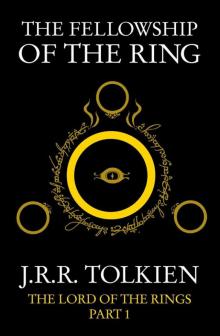 The Fellowship of the Ring
The Fellowship of the Ring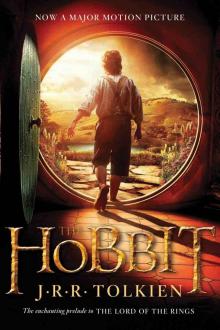 The Hobbit
The Hobbit The Two Towers
The Two Towers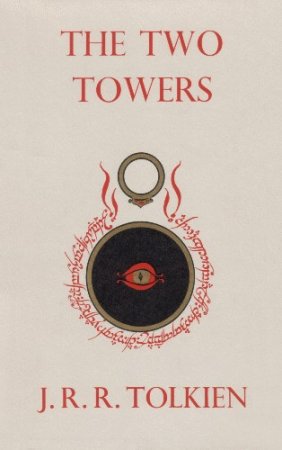 The Return of the King
The Return of the King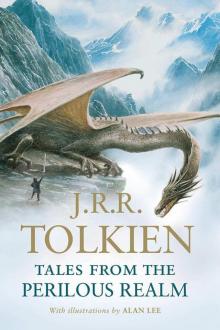 Tales From the Perilous Realm
Tales From the Perilous Realm Leaf by Niggle
Leaf by Niggle The Silmarillon
The Silmarillon The Book of Lost Tales, Part Two
The Book of Lost Tales, Part Two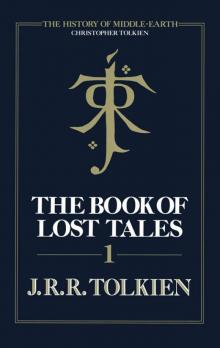 The Book of Lost Tales, Part One
The Book of Lost Tales, Part One The Book of Lost Tales 2
The Book of Lost Tales 2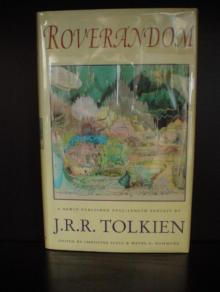 Roverandom
Roverandom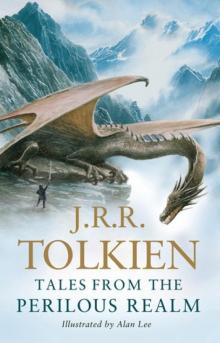 Smith of Wootton Major
Smith of Wootton Major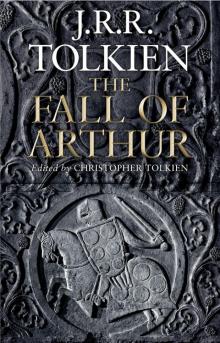 The Fall of Arthur
The Fall of Arthur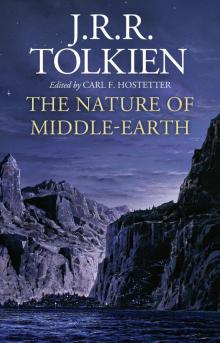 The Nature of Middle-earth
The Nature of Middle-earth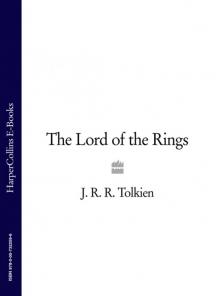 The Lord of the Rings: The Fellowship of the Ring, The Two Towers, The Return of the King
The Lord of the Rings: The Fellowship of the Ring, The Two Towers, The Return of the King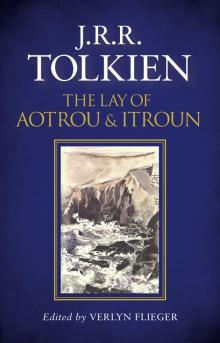 The Lay of Aotrou and Itroun
The Lay of Aotrou and Itroun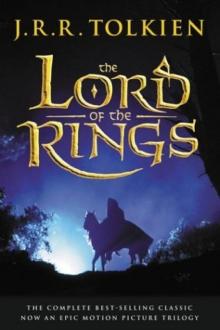 lord_rings.qxd
lord_rings.qxd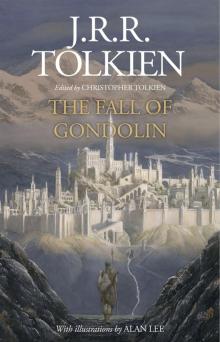 The Fall of Gondolin
The Fall of Gondolin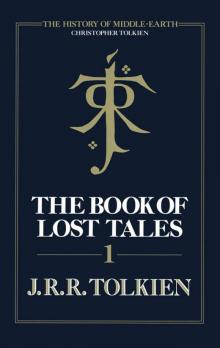 The Book of Lost Tales, Part 1
The Book of Lost Tales, Part 1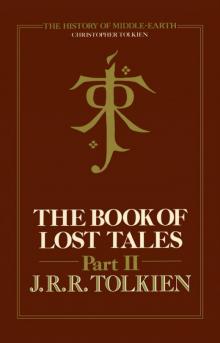 The Book of Lost Tales, Part 2
The Book of Lost Tales, Part 2 The Lord of the Rings
The Lord of the Rings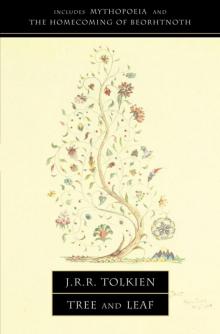 Tree and Leaf
Tree and Leaf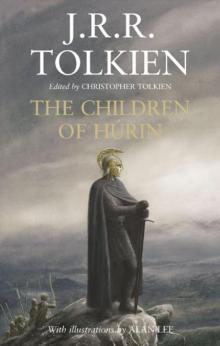 The Children of Húrin
The Children of Húrin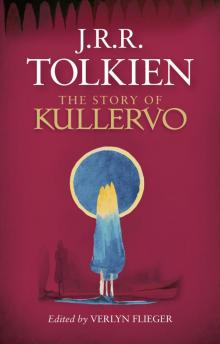 The Story of Kullervo
The Story of Kullervo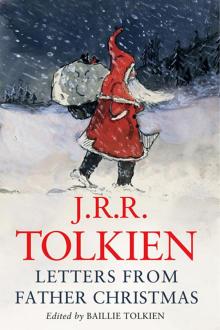 Letters From Father Christmas
Letters From Father Christmas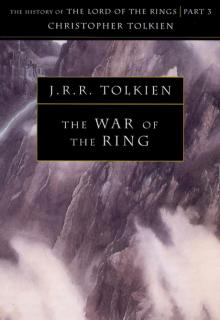 The History of Middle Earth: Volume 8 - The War of the Ring
The History of Middle Earth: Volume 8 - The War of the Ring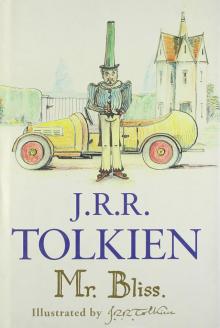 Mr. Bliss
Mr. Bliss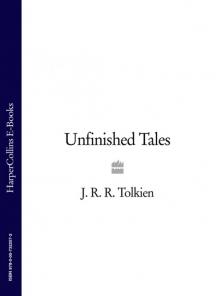 Unfinished Tales
Unfinished Tales The Adventures of Tom Bombadil
The Adventures of Tom Bombadil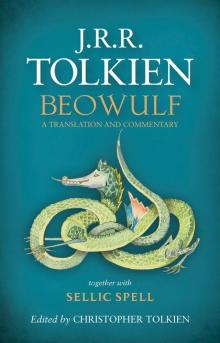 Beowulf: A Translation and Commentary, together with Sellic Spell
Beowulf: A Translation and Commentary, together with Sellic Spell The Silmarillion
The Silmarillion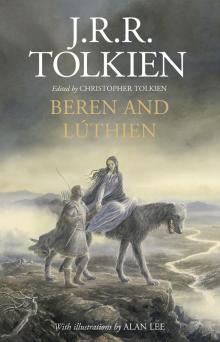 Beren and Lúthien
Beren and Lúthien